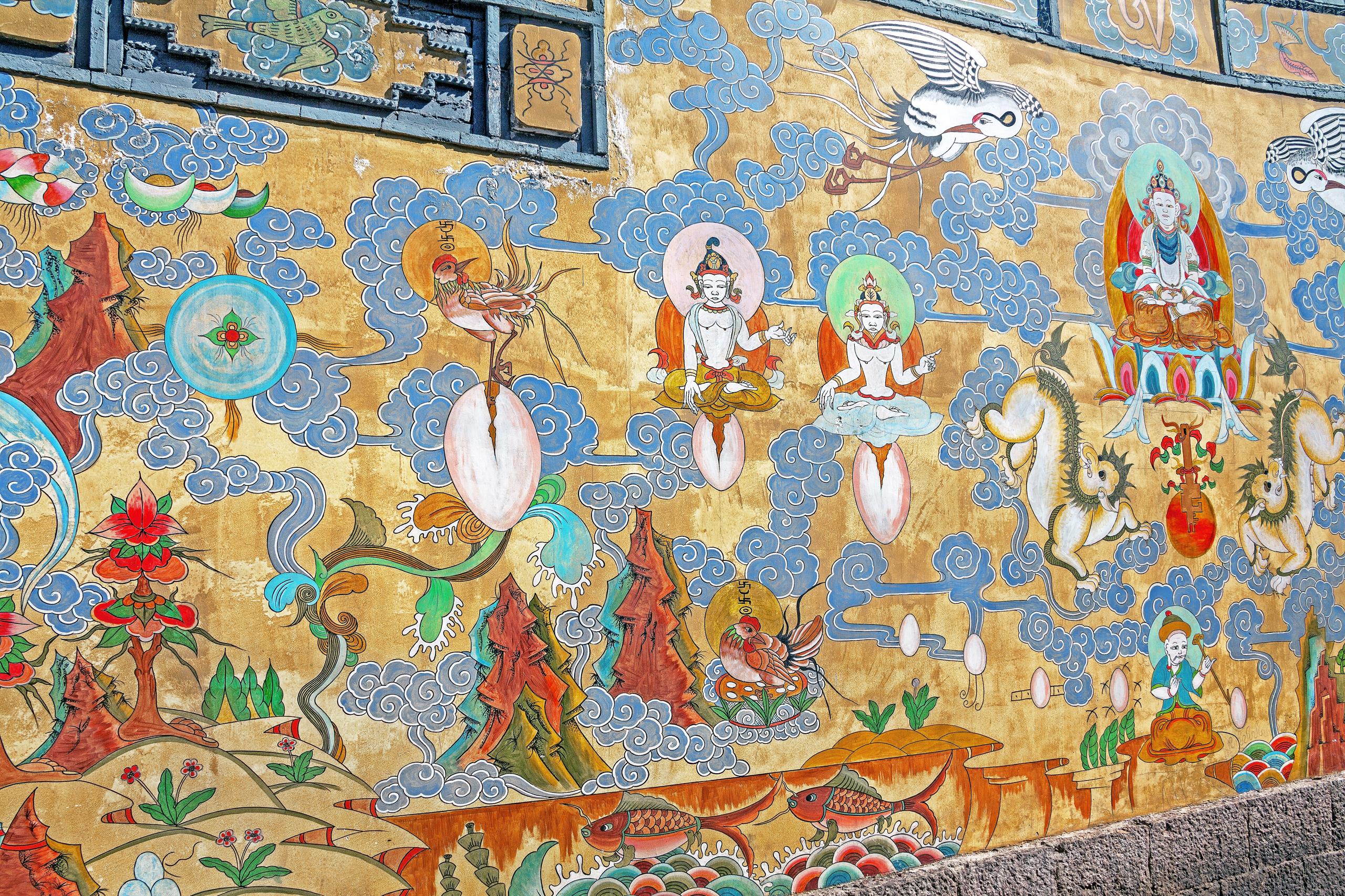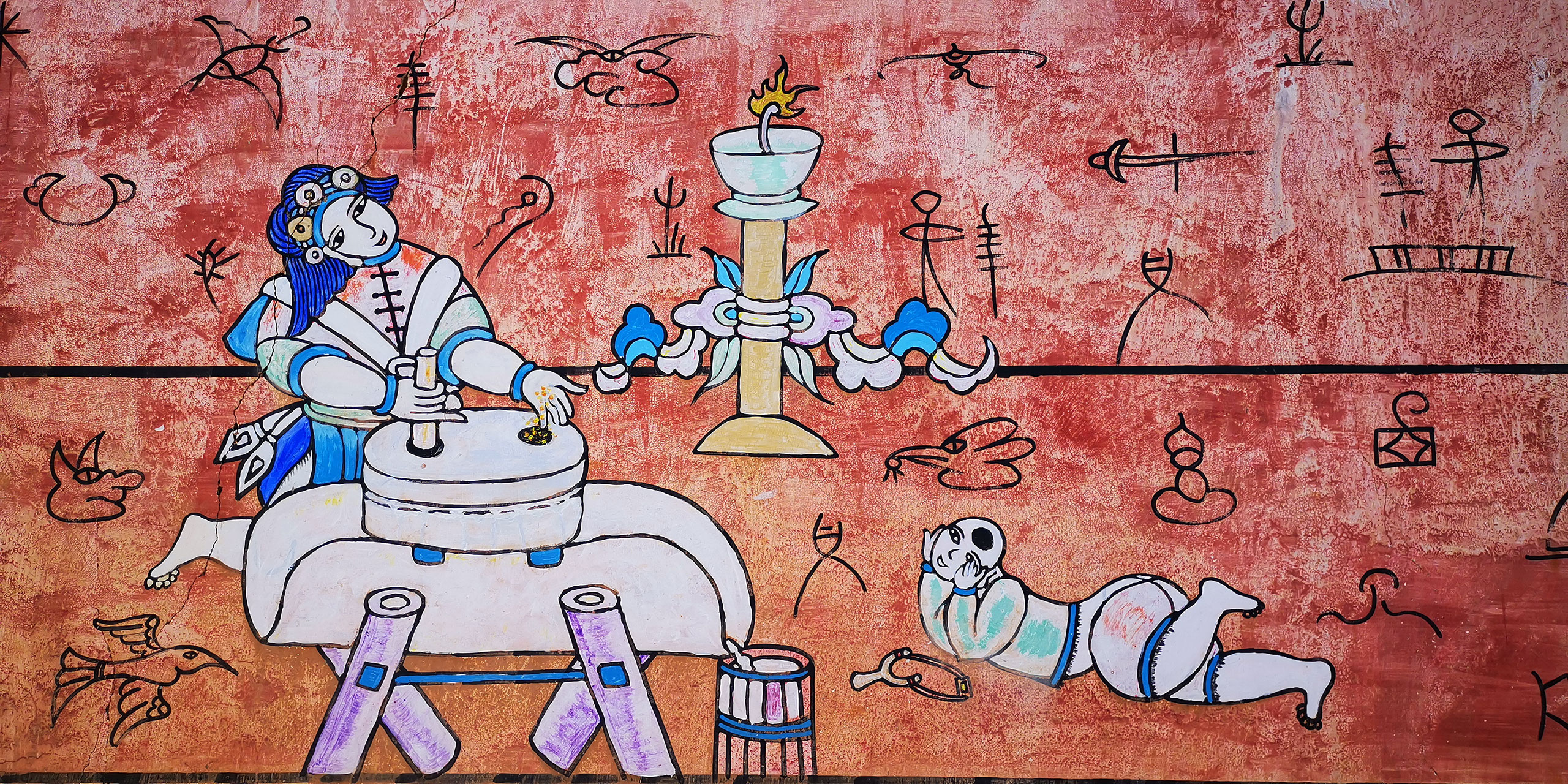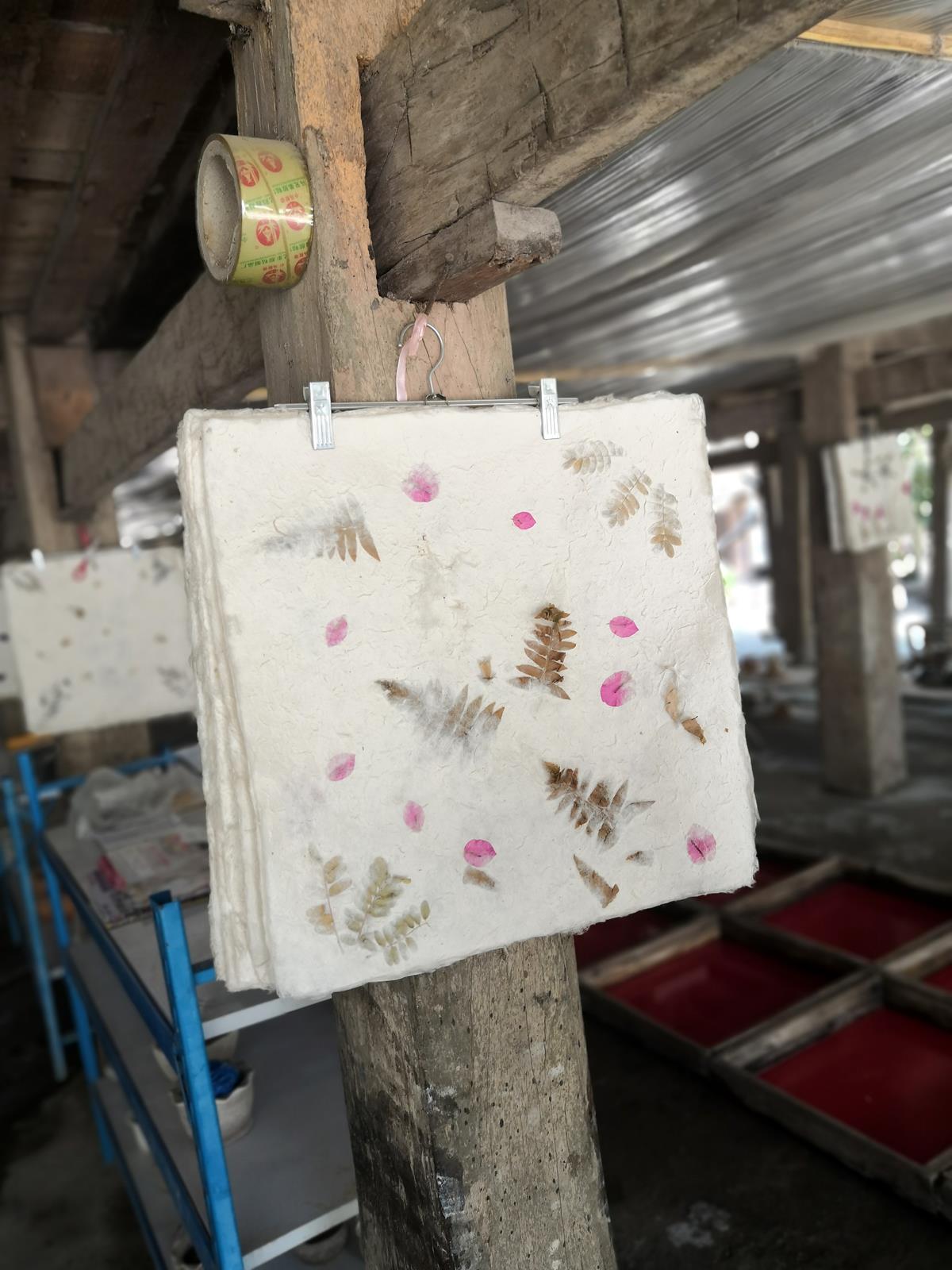


Dongba painting is the oldest form of religious painting of the Naxi people, and their proudest and most characteristic artistic legacy. The center of Dongba painting is in the Naxi region of Lijiang City in Yunnan Province.
The artistic tradition of Dongba painting can be traced back to ancient Dongba hieroglyphs and the religious activities they were associated with. During sacrificial ceremonies, the leaders of the ceremonies would dress up like Buddha, gods, animals, plants or demons and Dongba artists would draw the images on paper in a practice that evolved into the Dongba painting that survives today.
The primary subject matter of Dongba paintings were the gods and spirits that the Naxi people believed in, or about other aspects of their lives.
The creation of a Dongba painting begins with sketching on paper with a bamboo pen and ink made from pine trees. Upon the basic outline color is applied using brightly colorful natural pigments.
The Dongba painting style incorporates the artistic elements of ancient hieroglyphs, such as Beiye script, elegant line quality, bold colors, dynamic expressiveness and sharp details. The pictures portray stories.
The paintings fall generally into several categories.
Bamboo pen paintings were painted on bark paper using a piece of bamboo as a pen dipped in ink on the tip. They were used primarily for the bindings and illustrations of Dongba scripts.
Wooden plate paintings were made by drawing lines and painting colors with a brush on a wooden plate. They were done with bright colors, intricate designs and dramatic images and used for sorcery.
Scroll paintings combine the painting styles of the Naxi, Tibetan and Han people applying images to scrolls. In early times the scrolls were made of flax, then later on calico, and sometimes paper. They were highly detailed and intricate, and some of the paintings included gold or silver lines.
Card paintings were done with bamboo pens or brushes on paper flags. They were used for funerals.
Dongba painting is distinguished by bold, rough lines, primitive patterns and imagery and the use of Dongba hieroglyphs. In modern times it has achieved a new level of popularity and appreciation as a celebration of the ancient form.
Dongba painting can be seen today where it was historically practiced, primarily in the Gucheng District of Lijiang City in Yunnan Province and Yulong, about 600 kilometers or 372 miles northwest of Kunming.
Lijiang City









